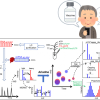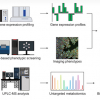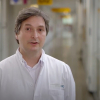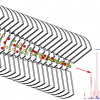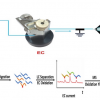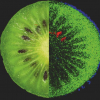
Dr Catherine E. Costello is the recipient of the 2017 Award for a Distinguished Contribution in Mass Spectrometry for her pioneering contributions to the development of tandem mass spectrometry of glycans and glycoconjugates.
Glycans differ from proteins in that their biosynthesis derives from a series of enzymatic reactions in the endoplasmic reticulum and Golgi apparatus and not from a template-driven process. Glycans, depending on class, may be branched, meaning that their structural determination requires determination of linkage positions and stereochemistry. The function of a glycan depends on the target to which it binds. A difference in a single monosaccharide linkage in a glycan alters the partners to which a glycan or glycoconjugate binds. For glycoproteins, the large number of proteoforms reflect glycan heterogeneity at each glycosylation site. Thus, the population of glycoprotein proteoforms present at any given place or time differ in their capacities to bind to partners that contain carbohydrate binding domains. The complexity of glycan and glycoconjugate structures presents a severe analytical challenge to the field of glycomics.
Professor Costello’s research has revolutionised glycomics by enabling comprehensive structural characterisation of free glycans and glycoconjugates in a sensitive and high throughput fashion. In the 1980s she was among the first to recognise the potential of combining emerging soft ionisation techniques with tandem mass spectrometry for characterisation of glycans. Today, her 1988 publication defining the dissociation nomenclature for glycans remains highly cited. Professor Costello delineated the strategy of producing the greatest degree of structural detail on glycans in a single tandem mass spectrometry step. She recognised that while collisional dissociation provides useful information, its utility is limited by low abundances of key cross-ring cleavage product ions. She developed activated electron dissociation methods for glycans and glycoconjugates that are inherently more effective for producing cross-ring cleavages. This has included studies of dissociation mechanisms and influences of metal cationization. Professor Costello and her co-workers also pioneered Fourier transform mass spectrometry of glycans and glycoconjugates with the application of electron-based activation/dissociation methods and demonstrated these methods on a time scale compatible with on-line LC-tandem MS. Professor Costello was the first to demonstrate top-down tandem MS analysis of intact glycoproteins. This is significant because most cell surface and secreted proteins are glycosylated and progress in biomedicine depends on the ability to characterize glycosylated proteoforms.
Professor Costello’s research activities define the present state of the art in glycan and glycoconjugate tandem mass spectrometry. These achievements address the needs in biomedicine for high throughput sequencing of glycans and glycoconjugates and for top-down analysis of intact glycoproteins.




